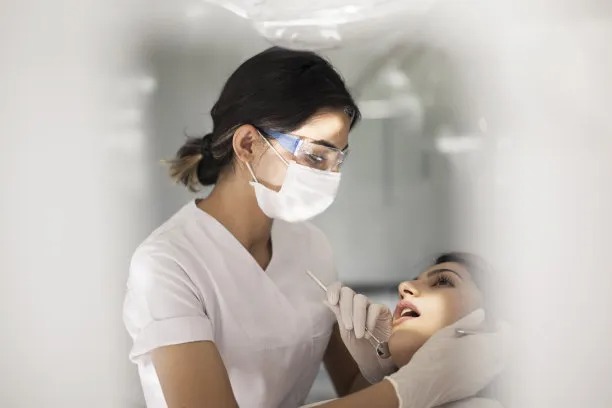A Step by Step Guide on How to Safely Extract a Tooth at Home Without Complications
Summary: Extracting a tooth at home can be daunting, but with the right approach, it can be done safely and effectively. This article offers a detailed, step-by-step guide on how to safely extract a tooth at home without complications. We will delve into the necessary preparations, essential tools, the extraction process itself, and post-extraction care to ensure a smooth recovery. By following this guide, individuals can take control of their dental health, avoiding potential complications while managing their dental emergencies with confidence.
1. Essential Preparations Before Tooth Extraction

Before initiating a tooth extraction at home, it is crucial to make adequate preparations to ensure safety and effectiveness. First, evaluate your dental condition: if the tooth is severely infected, consider seeking professional help instead of attempting extraction. Having a clear understanding of the condition of your tooth will guide you through the procedure.
Next, create a clean and organized workspace. Choose a location with good lighting and gather all necessary supplies, such as gloves, antiseptic solution, and clean towels. This will help reduce the risk of infection and create a safe environment for the procedure. Ensuring that everything is at hand can make the extraction process smoother and more efficient.
Lastly, understanding the potential risks and complications associated with tooth extraction is vital. Familiarize yourself with symptoms that may indicate the need for medical attention, such as excessive bleeding or signs of infection. Being informed will help you act quickly should any complications arise.
2. Tools and Materials Required for a Safe Extraction
The right tools and materials are essential for a successful tooth extraction at home. Start by procuring a pair of sterile dental gloves to ensure cleanliness during the procedure. Additionally, a dental mirror and forceps can assist in evaluating and accessing the tooth more conveniently.
Moreover, having an antiseptic solution on hand, such as hydrogen peroxide or mouthwash, will allow you to rinse the oral cavity pre- and post-extraction. This will minimize the risk of infection and promote a cleaner extraction site. It is also advisable to have gauze ready to manage any bleeding that may occur during or after the extraction.
In some cases, a topical anesthetic can be beneficial to numb the area around the tooth before extraction. While it may not completely eliminate discomfort, it can greatly reduce pain levels. Ensure that any anesthetic you choose is safe and appropriate for your use.
3. The Tooth Extraction Process Explained
The actual extraction process begins with properly numbing the area, if applicable. Apply the topical anesthetic as directed and allow it some time to take effect. Once you feel sufficiently numb, it’s time to begin the extraction itself.
Grip the tooth firmly with the forceps, ensuring you have a solid hold on it. Gently rock the tooth back and forth to help loosen it from the gums and surrounding bone. Patience is key here; do not force the tooth out, as this can lead to complications.
As the tooth begins to separate from the surrounding tissue, continue applying gentle pressure while pulling straight outwards. Once it is free, place the tooth in a clean container. If bleeding occurs, use gauze to apply pressure to the socket. Monitor the bleeding for a short while and ensure it is controlled.
4. Post-Extraction Care for Optimal Recovery
After successfully extracting the tooth, following proper aftercare is crucial. First, bite down gently on a piece of gauze placed over the extraction site to help with clot formation. Change the gauze as needed until the bleeding subsides.
Rest is essential for recovery. Avoid strenuous activities for at least 24 hours post-extraction to allow your body to heal properly. Additionally, stay hydrated and consume soft foods to prevent irritation and further injury to the extraction site.
Pain management is also important. Over-the-counter pain relievers can help alleviate discomfort but consult with a healthcare professional if pain persists or worsens. Keep an eye out for any signs of infection, such as swelling or fever, and seek medical advice if these symptoms develop.
Summary:
In conclusion, extracting a tooth at home can be performed with the right preparations, appropriate tools, and a careful approach to the extraction process. Understanding the importance of post-extraction care can lead to a successful and complication-free recovery.
This article is compiled by Vickong Dental and the content is for reference only.



